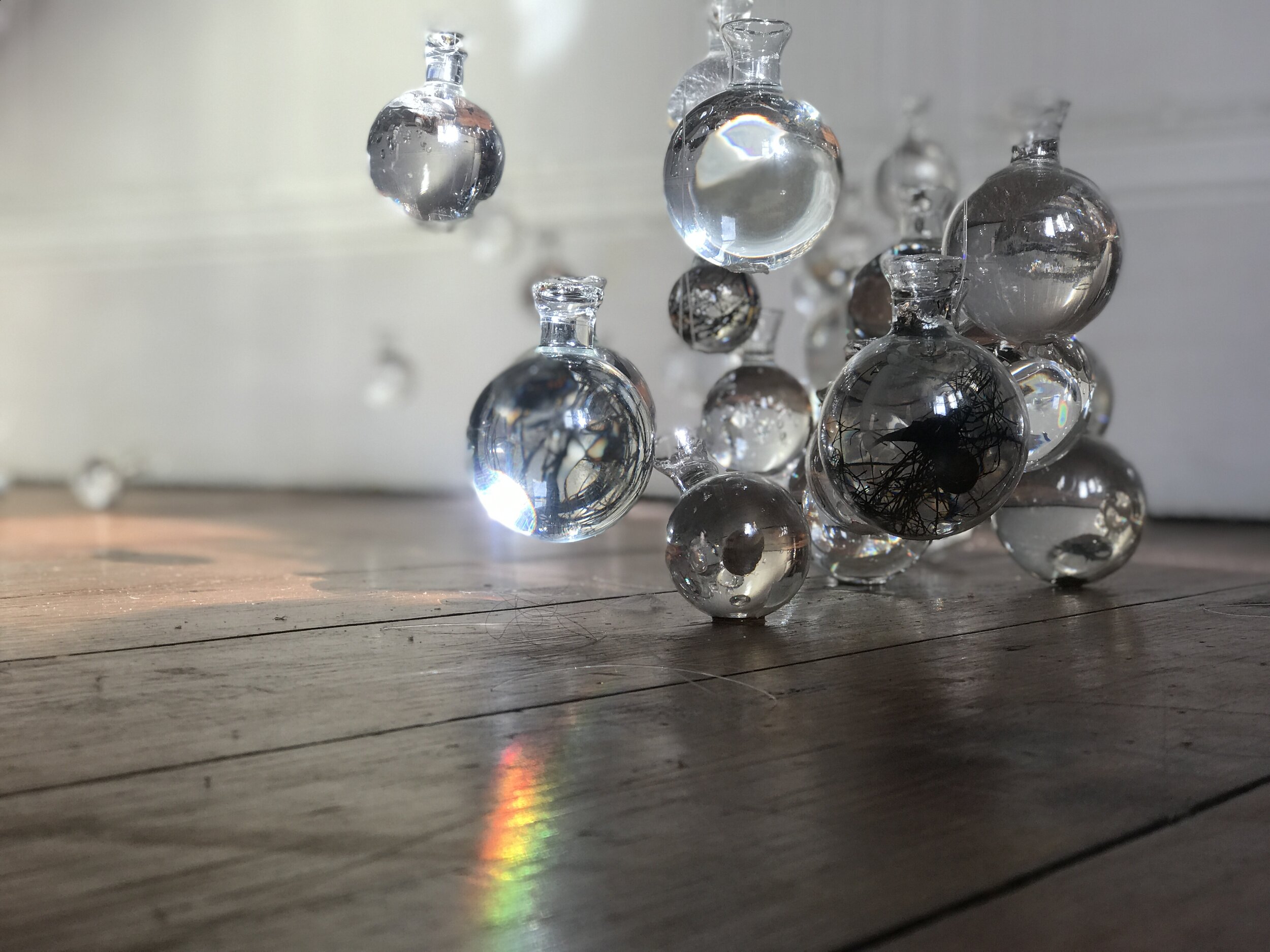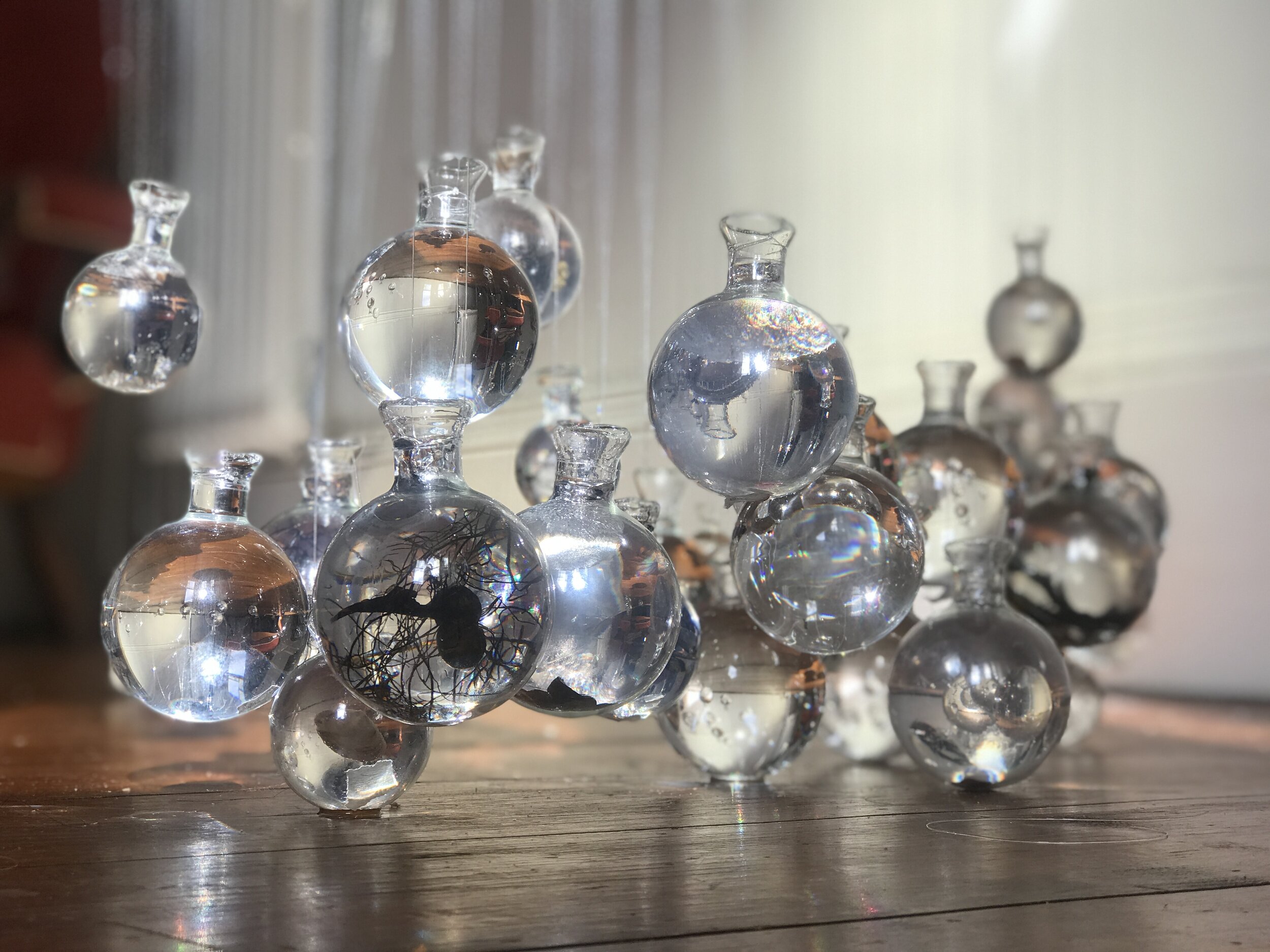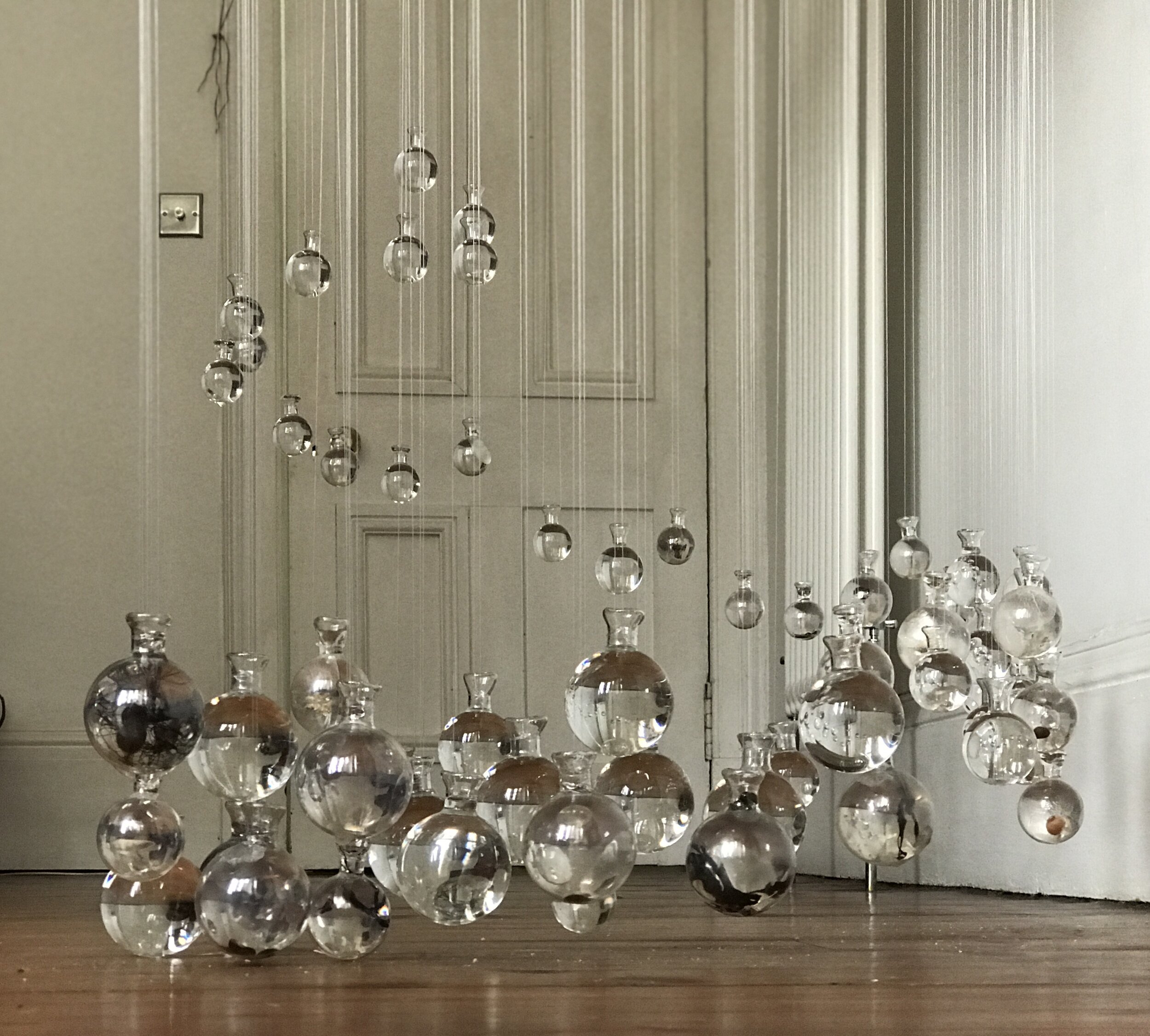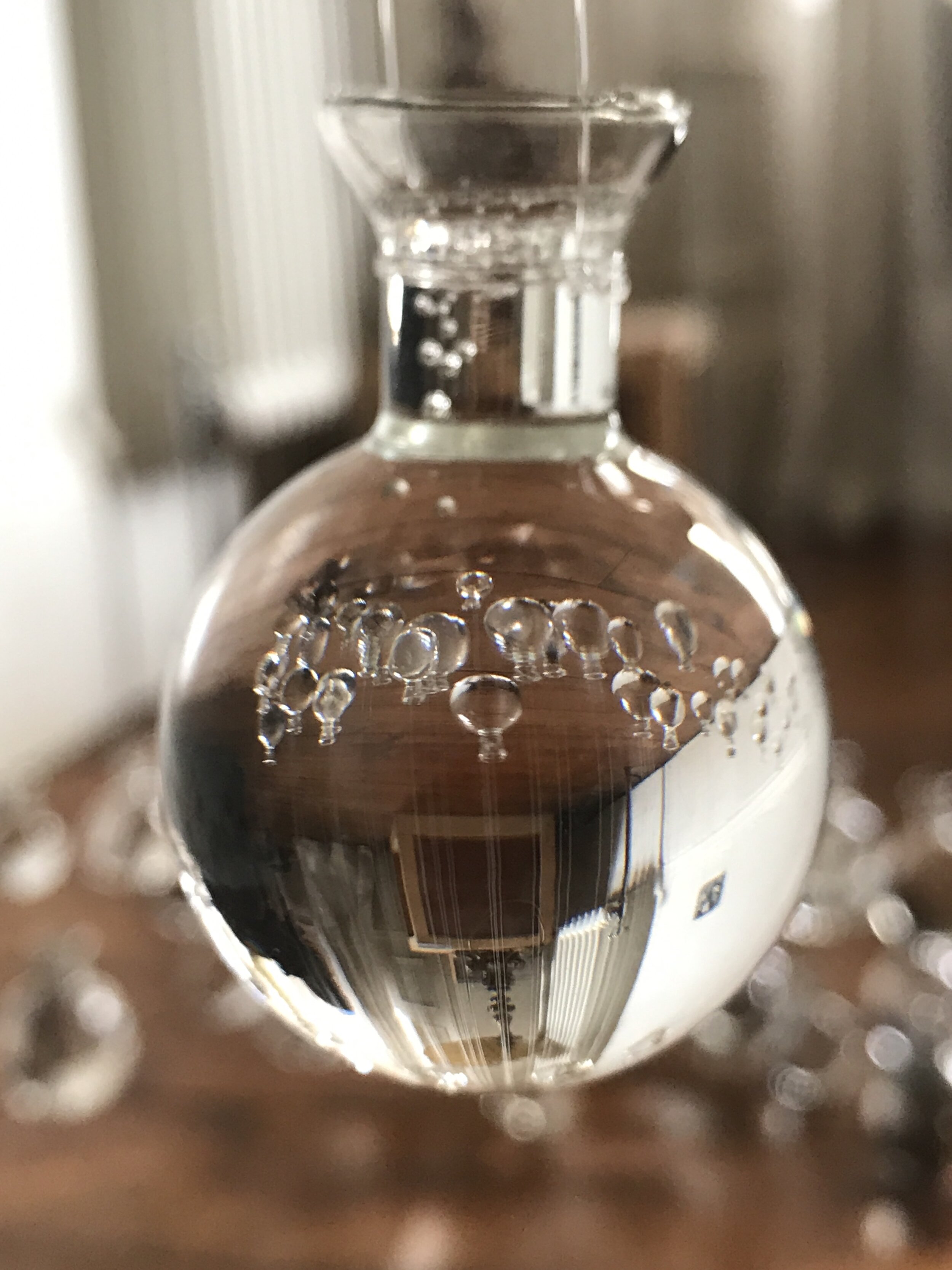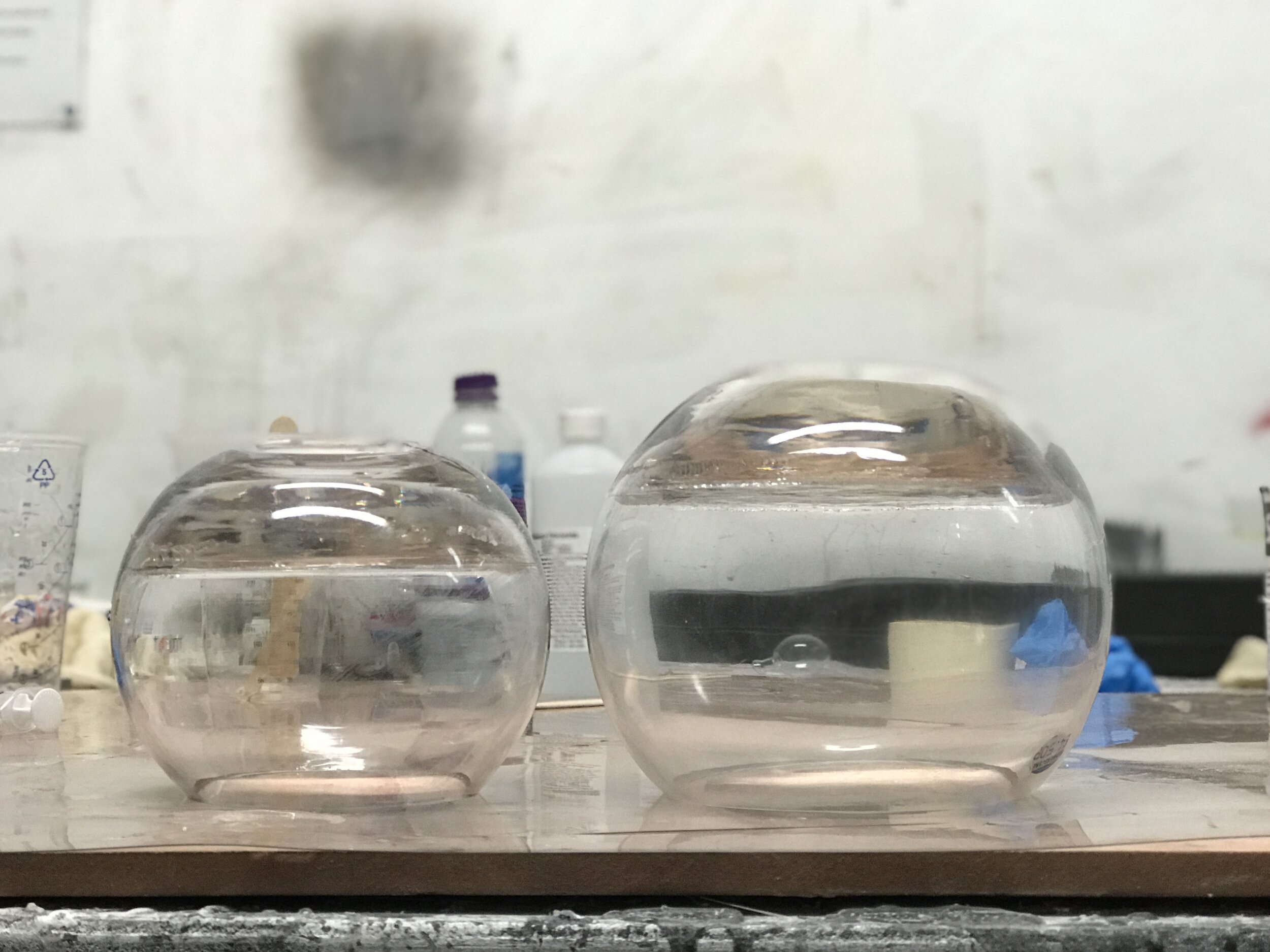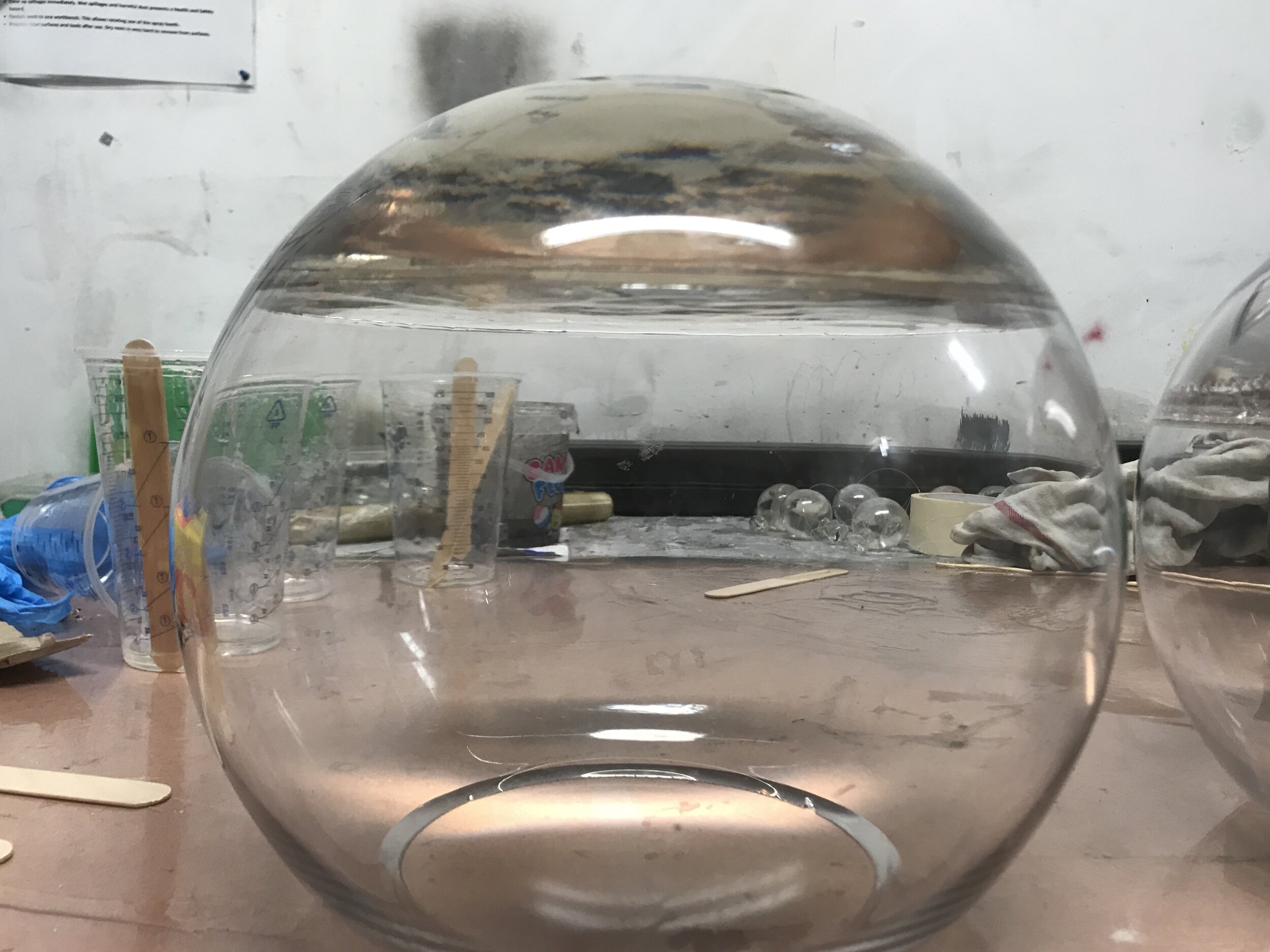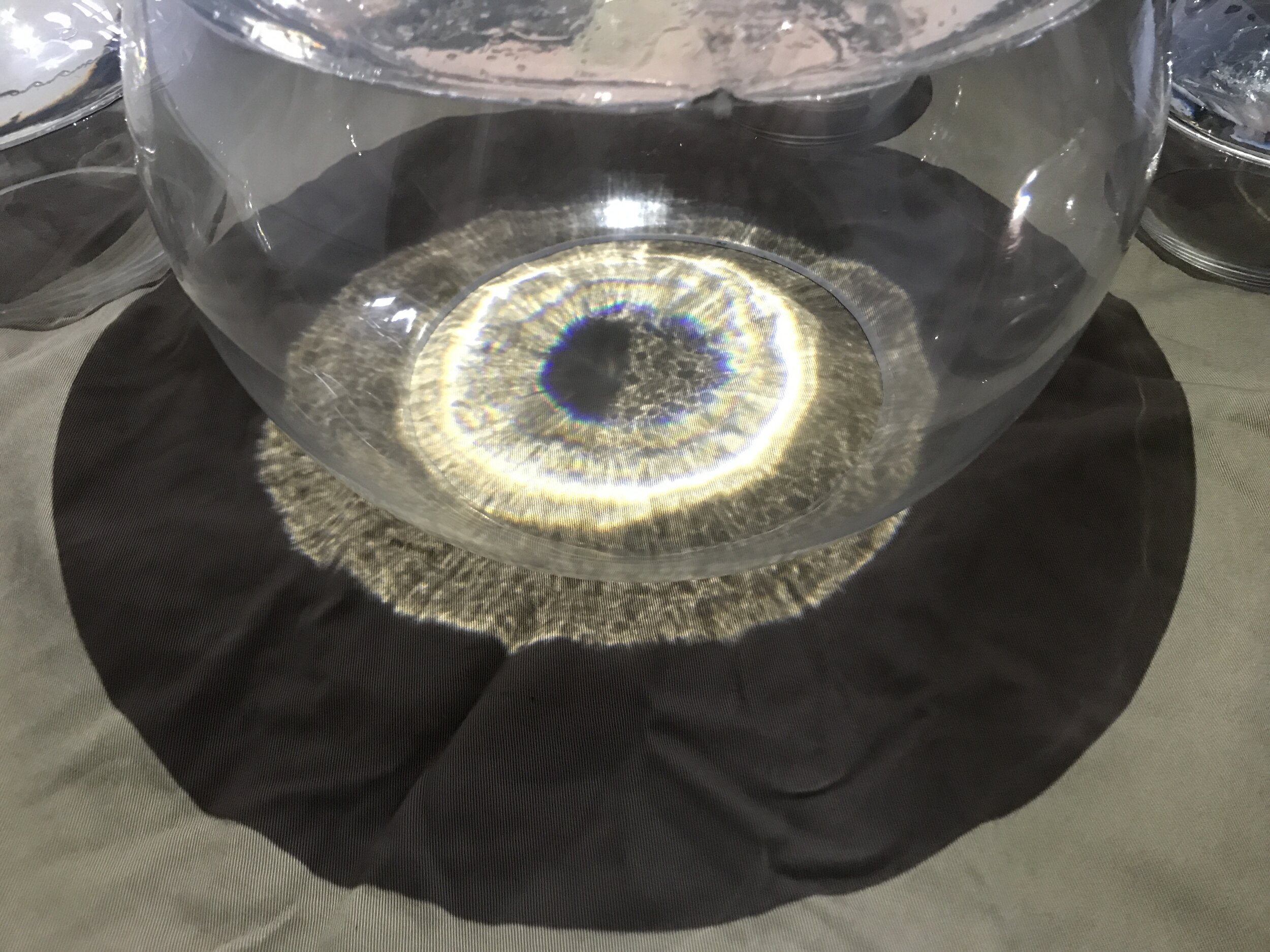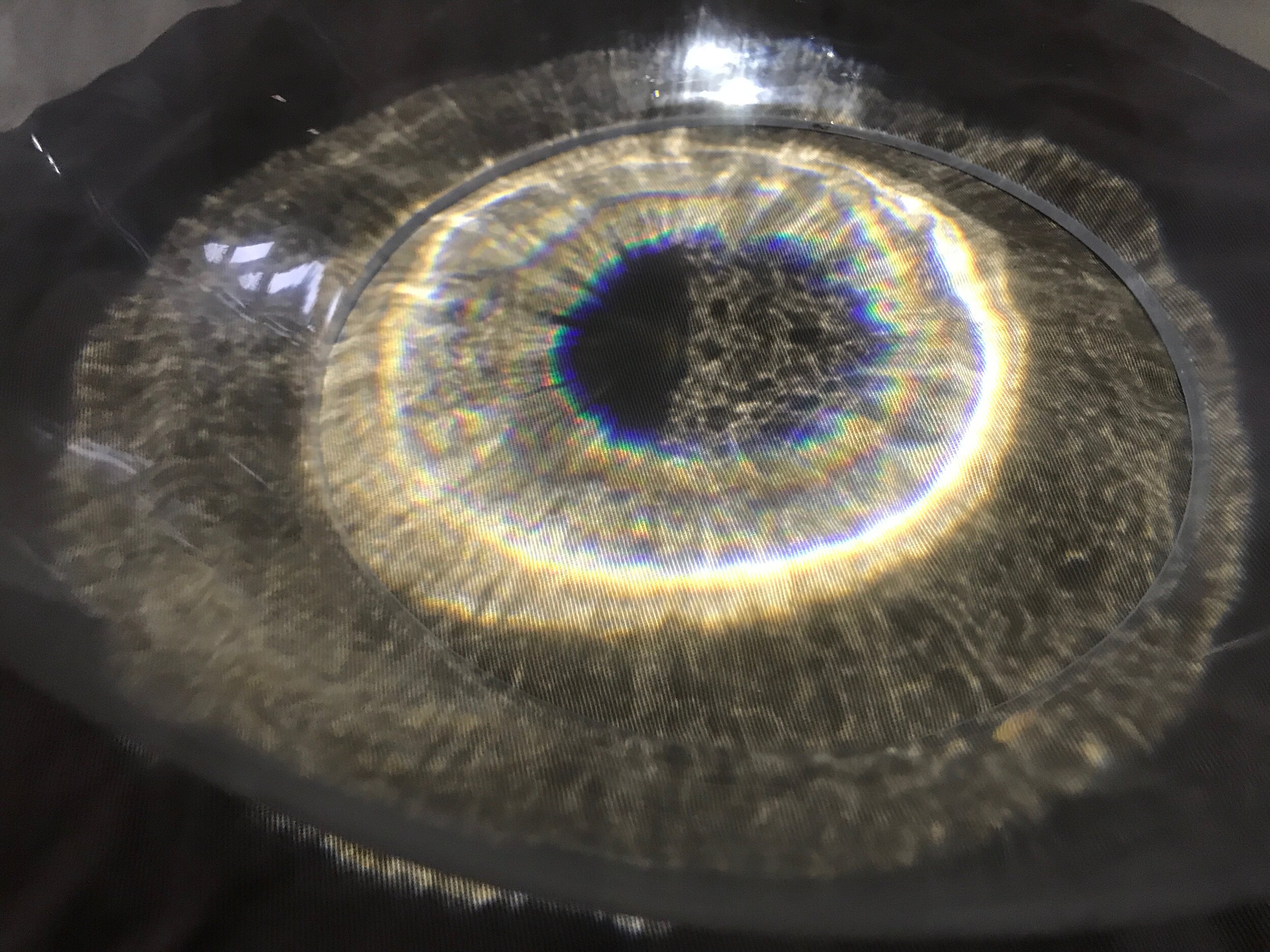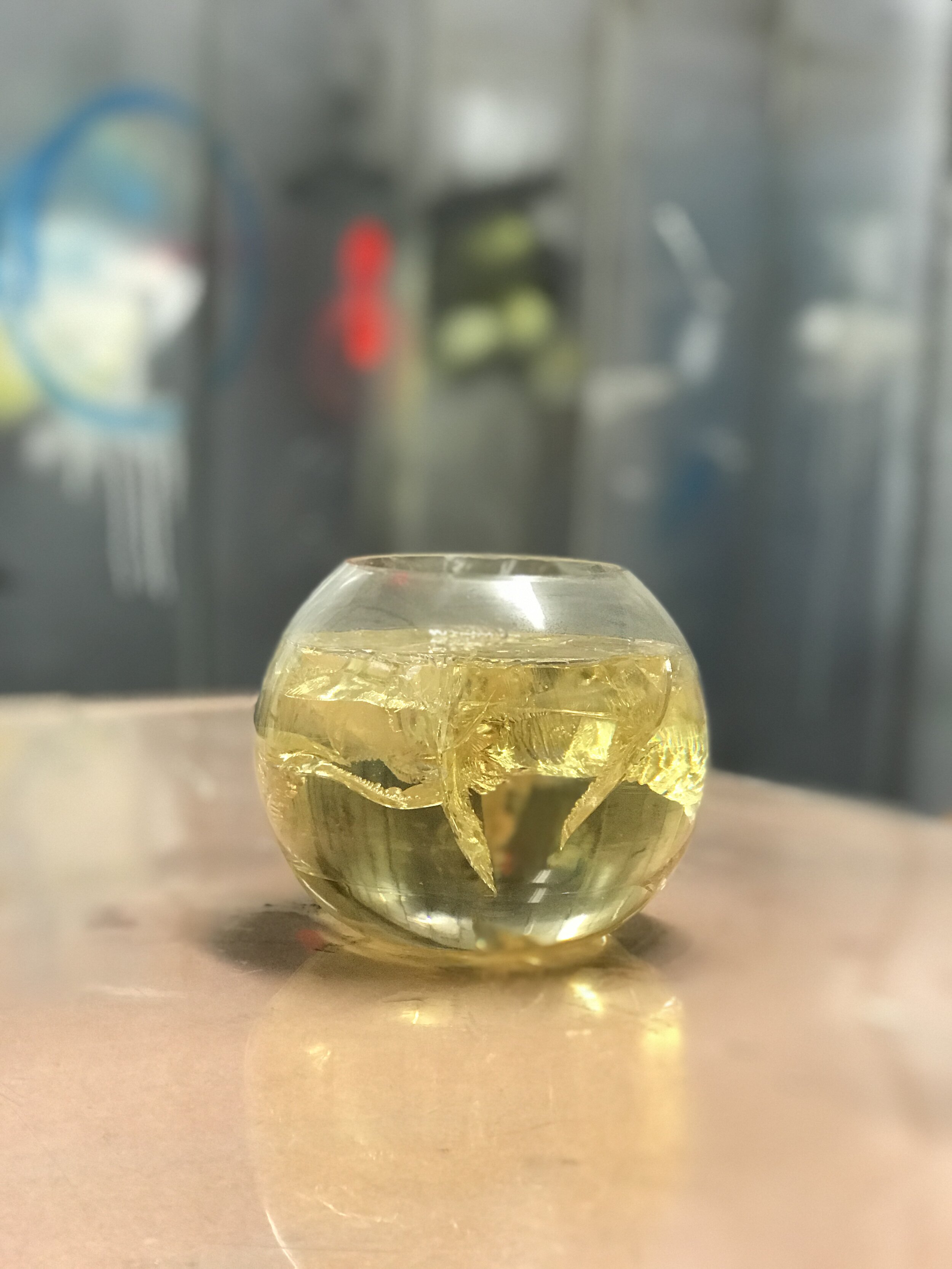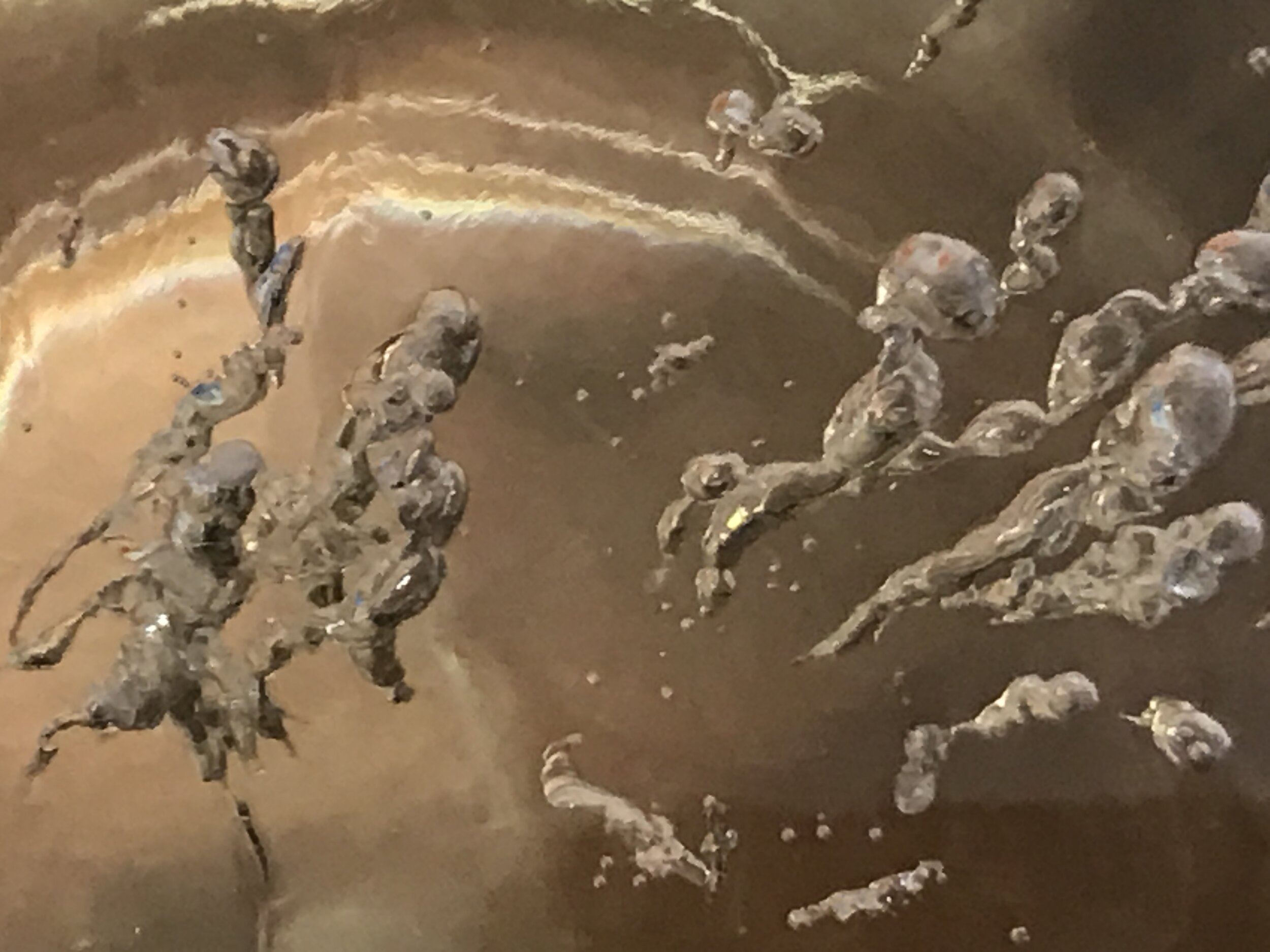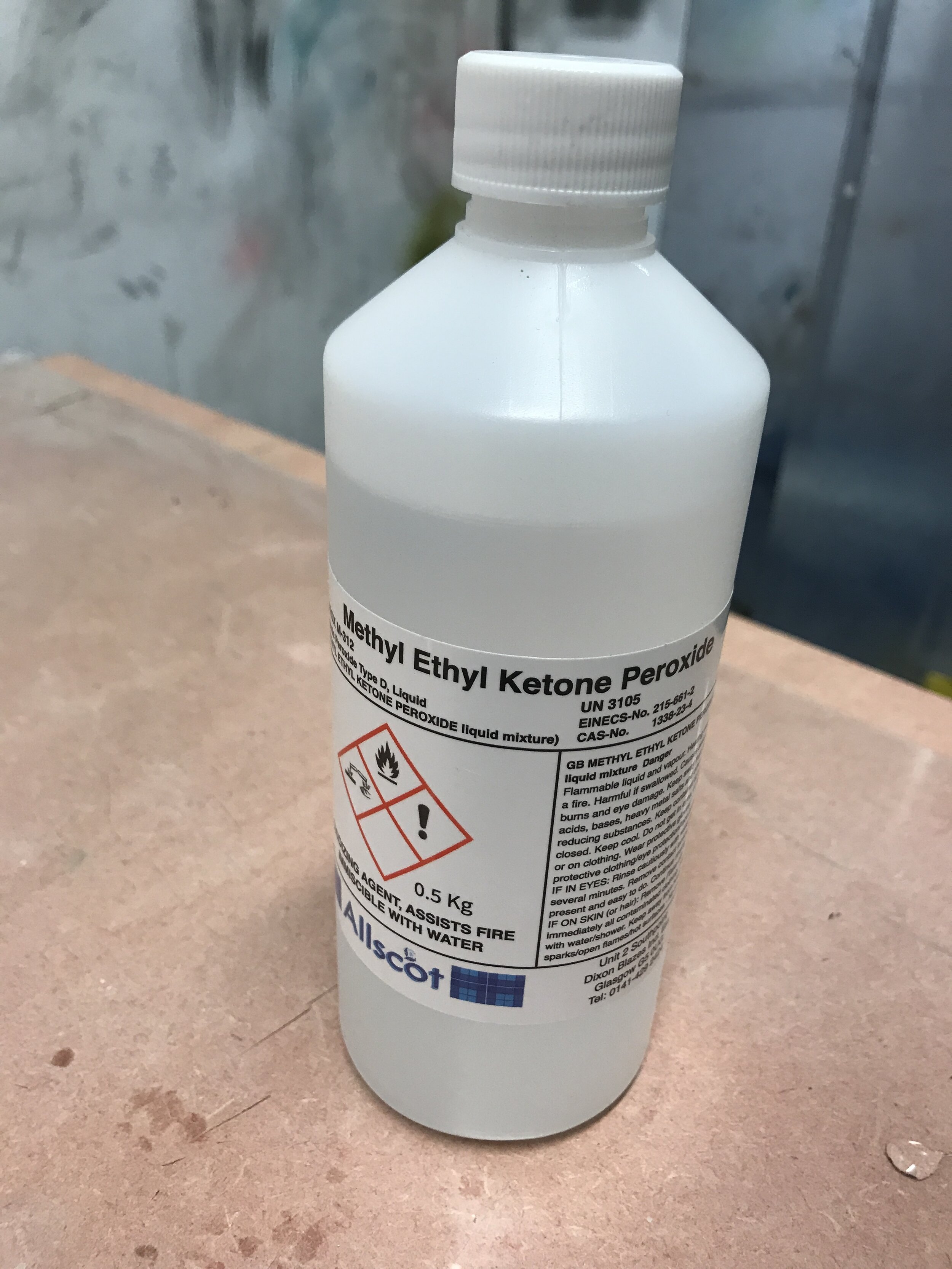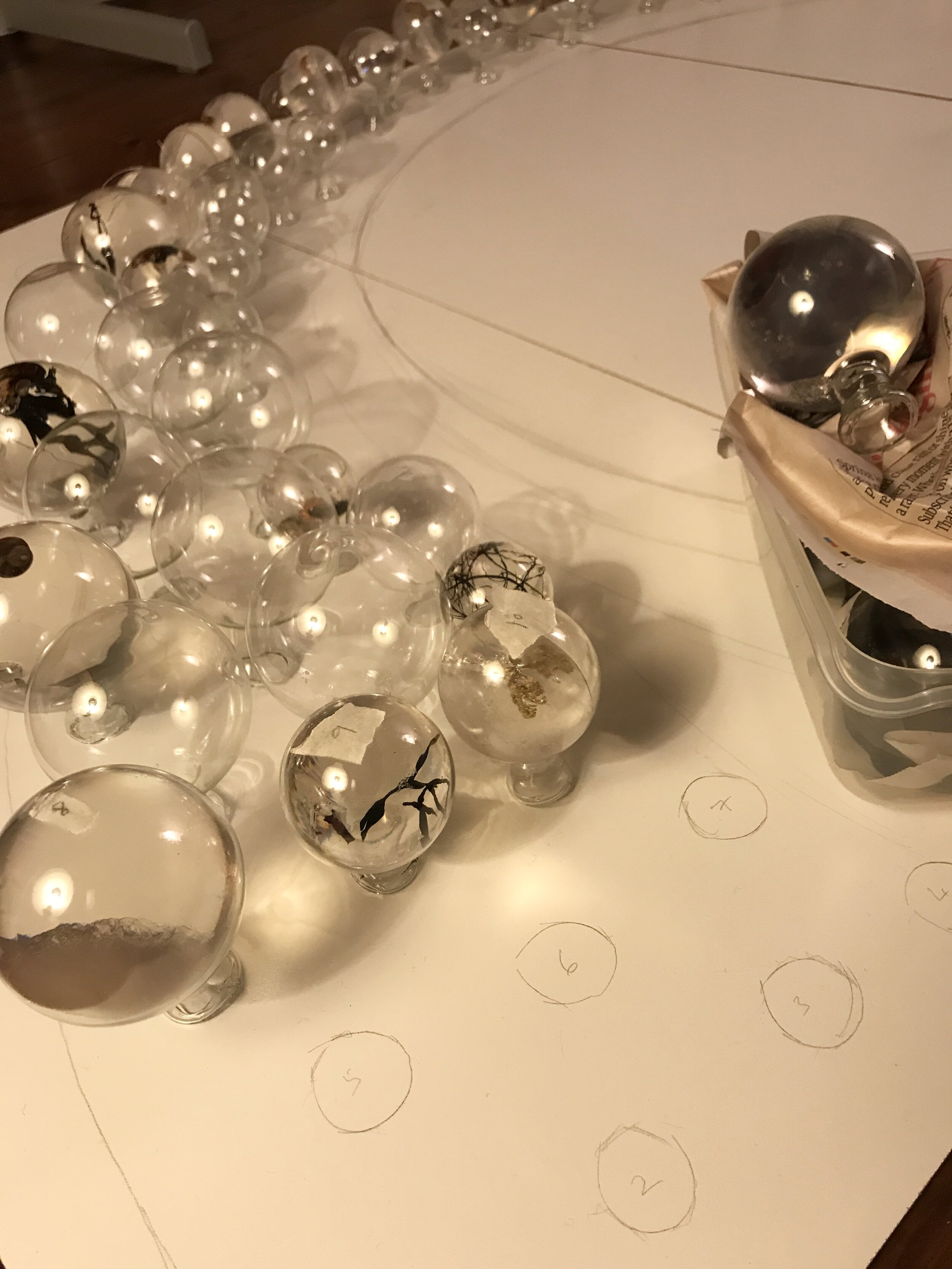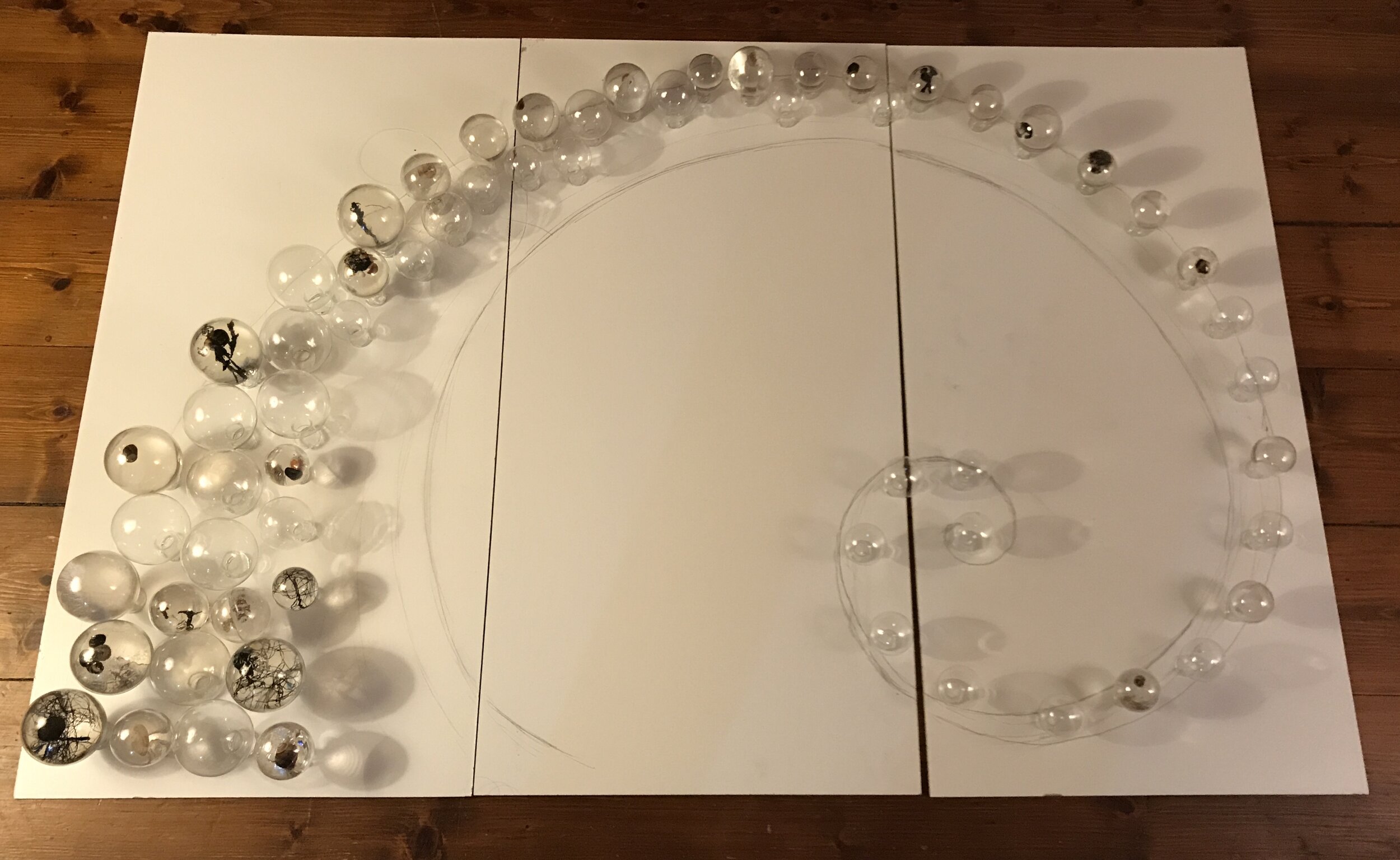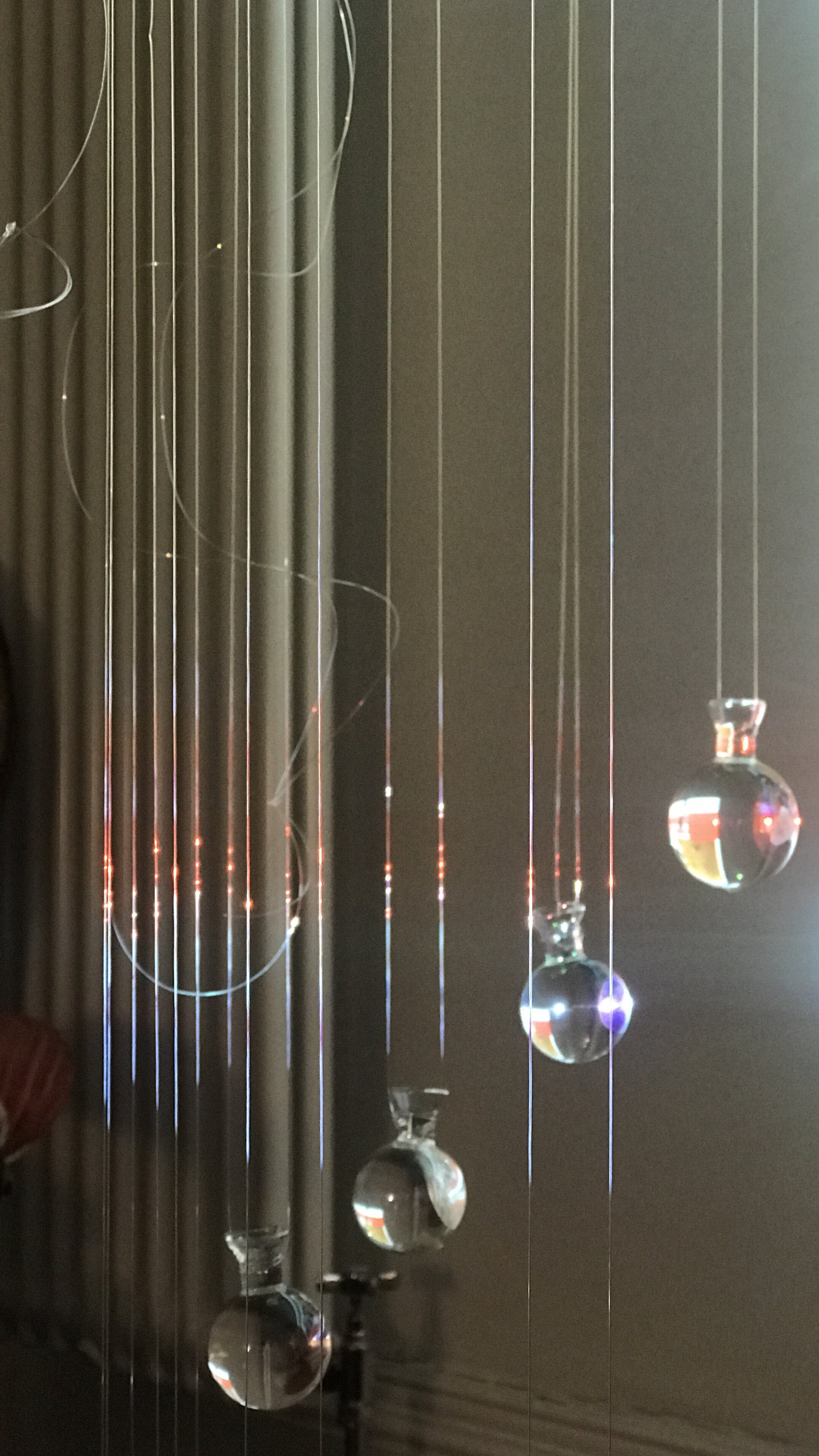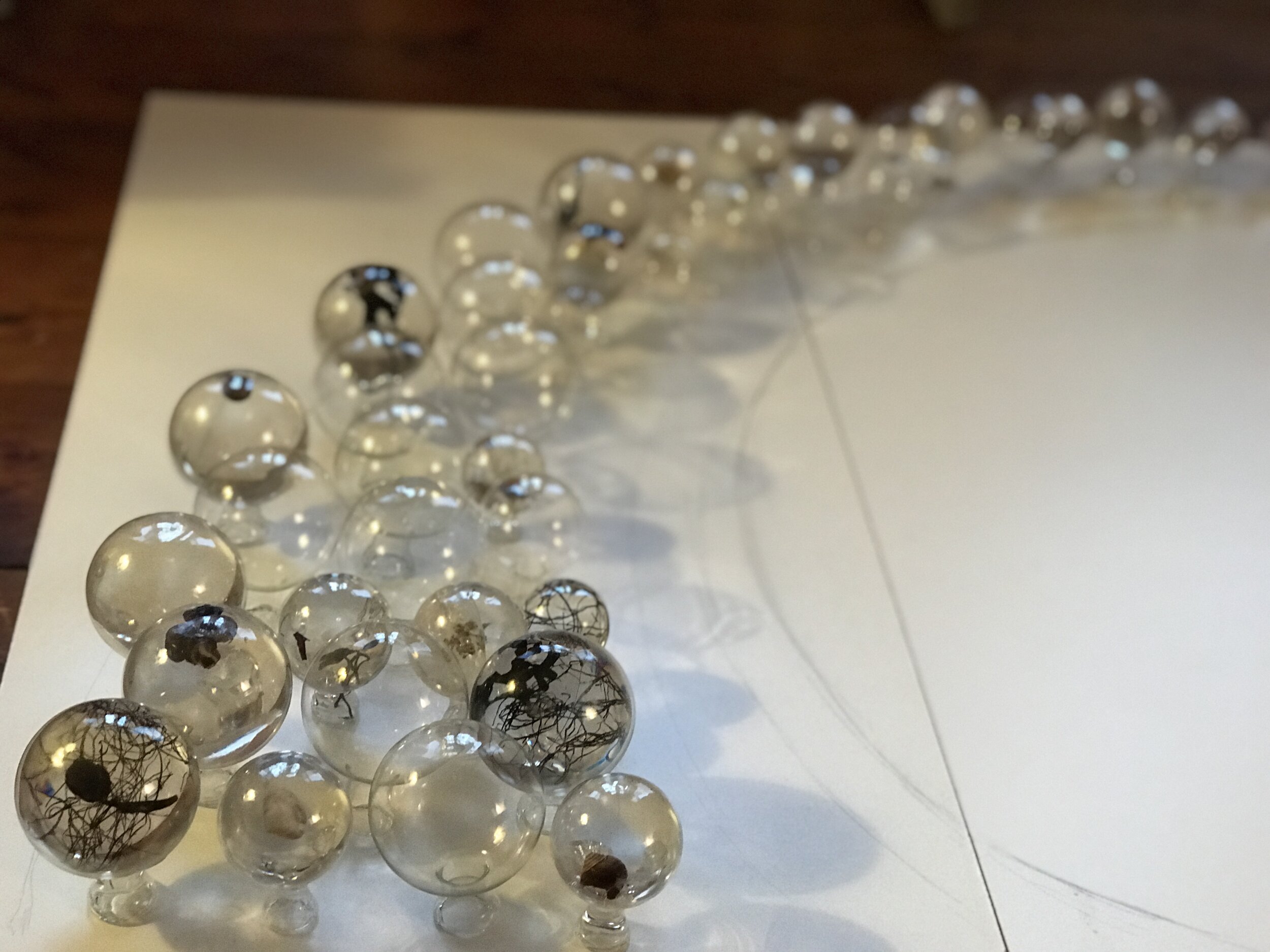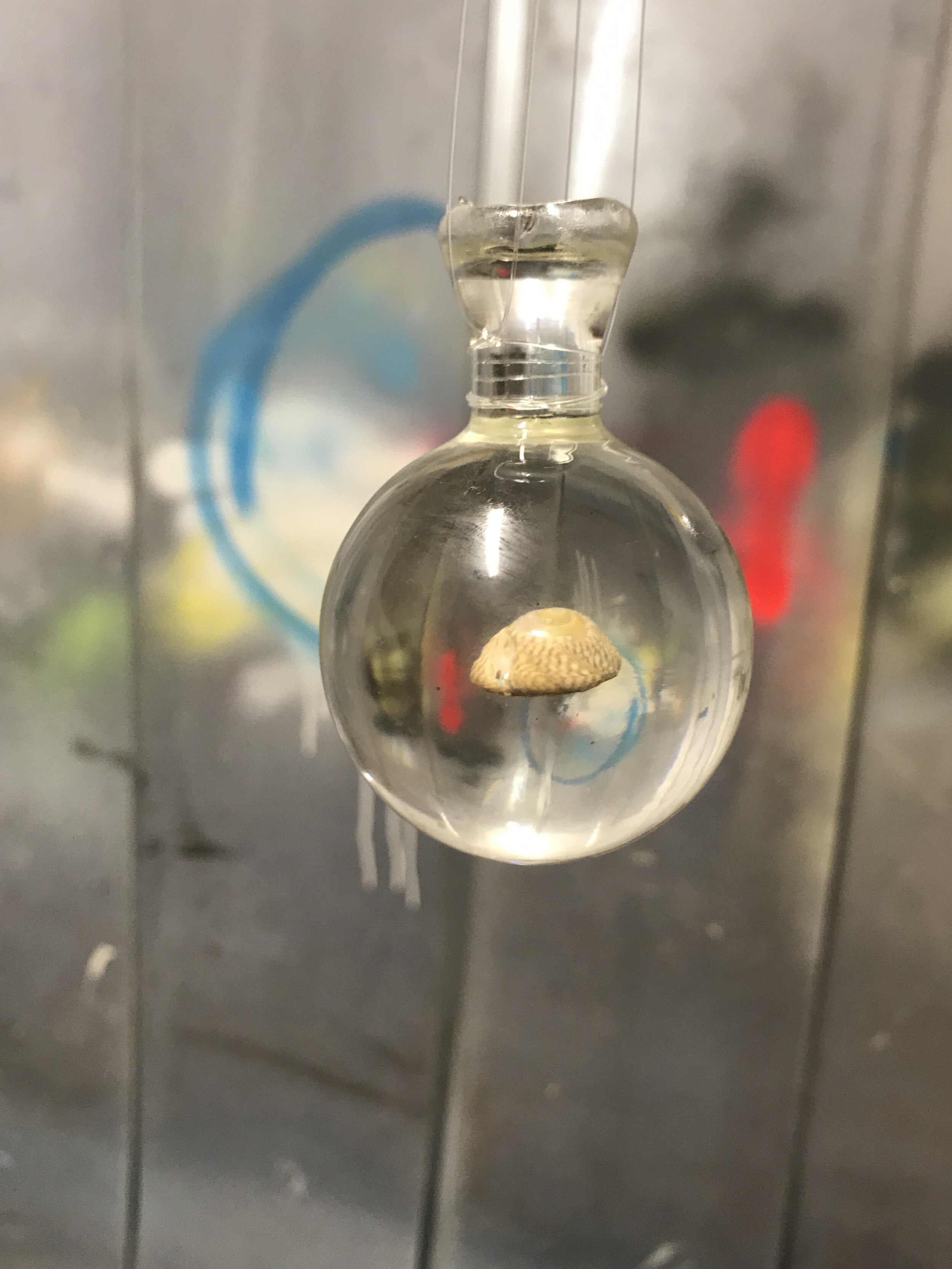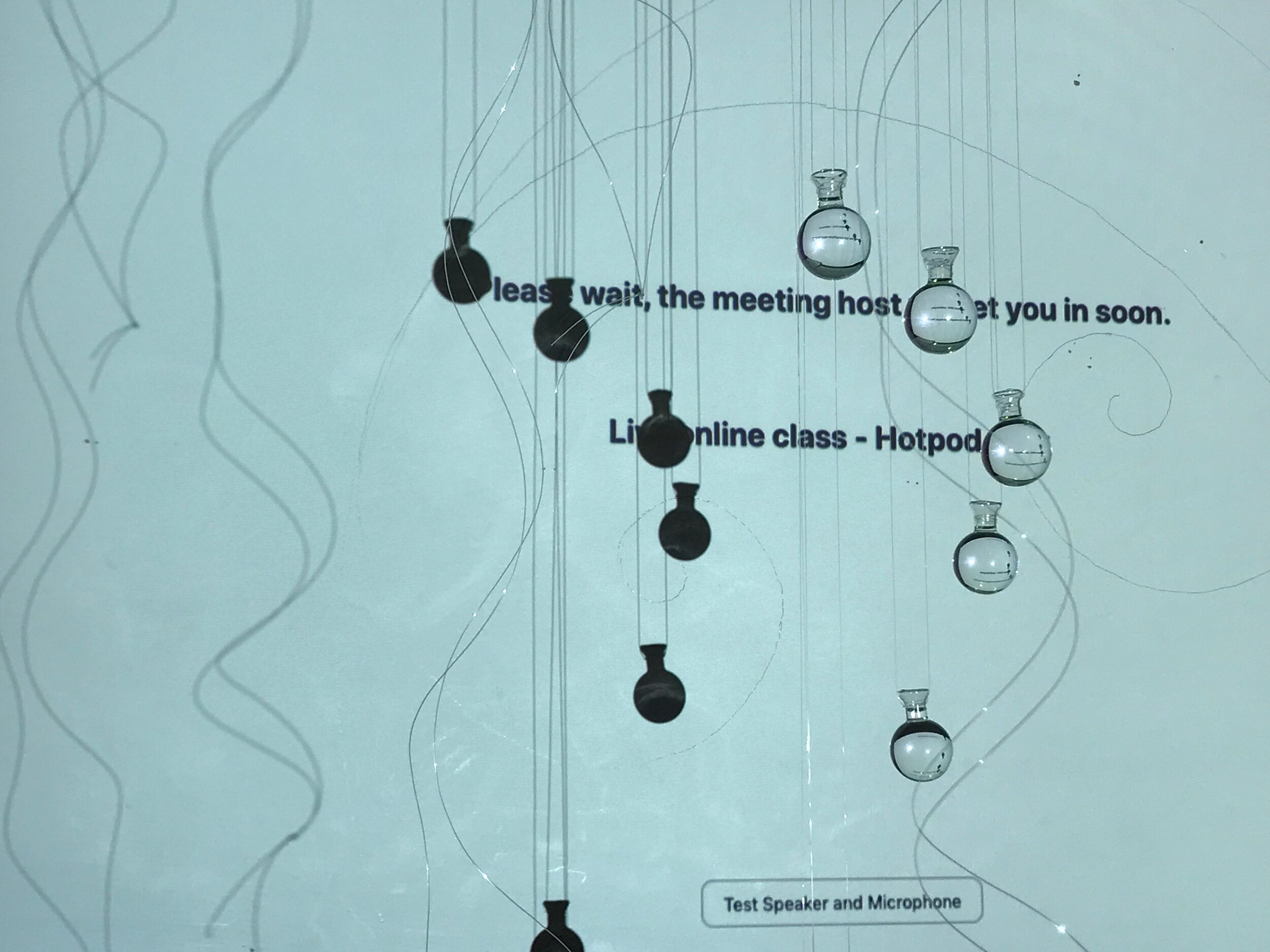Over the last few weeks, I have been creating an Edinburgh-specific version of my moving image installation Oscillations for the Ascus Art and Science & Summerhall show Syncrasy. This was due to be shown as part of the Edinburgh Science Festival, opening 3 April 2020, but has now been postponed due to COVID-19.
Developing the installation for Summerhall has led to the creation of two new glass and resin sculptures: Suspensions and Slackwater. I wanted to create some kind of material focal point within the installation to complement the audio and video. I also wanted to explore the idea that tidal cycles embody both stillness and movement, in the sense that continuity and change are interlinked, relational phenomena, that cannot exist without one another.
Suspensions
Suspensions is a hanging sculptural work inspired by the traces that are left behind by tidal action. The suspended glass orbs are filled with resin or water and some contain embedded seaweed, shells or sand. Reminiscent of tide pools, which remain after the tide recedes, they can also be read as bubbles. and as orbs of light, like the ones that dance on the surface of the water in one of the accompanying video projections.. The orbs will be hung from the ceiling in a wave-like fibonacci spiral formation. The shape will appear to change according to angle of view. I envisage that, in the installation proper, the pattern will be readable as a fibonacci spiral only from below and directly from the side. The images here are an interim, work-in progress installation, hung in a domestic setting.
SlackWater
There is a phenomenon in tidal navigation known as slack water. It refers to the period around high and low tide when the current is neither in flood nor ebb (Wolanski and Elliott, 2016). I wanted to develop the work’s potential to evoke ideas of suspended time, imminent change, and latent possibilities.
Slackwater is a sculpture made up of nine glass fish bowls between 40cm and 10cm in diameter, filled to varying levels with clear polyester resin. The bowls will be inverted and arranged in such a way that the surface of the resin forms a single, consistent level despite the differences in the size of the vessels. Clear resin has a liquid or jelly-like appearance and, with no obvious mechanism for holding the resin in place, attention is drawn to the provisional and precarious nature of the space below. The sculpture alludes to a cessation of normal temporality, and perhaps even hints at a reversal of cause and effect.
By drawing attention to the temporary void, it can be seen as a place of possibility – a latent time-space – where anything might be about to happen. I have been inspired by Karen Barad’s writings on nothingness in her article Troubling Time/s and Ecologies of Nothingness (Barad, 2017) and her Documenta essay What is the measure of Nothingness? (Barad, 2012). She uses quantum physics to argue that the vacuum - the ultimate void - is anything but empty, but is in fact a space teeming with infinite potential.
As social distancing measures threaten to grind on across the globe, there is a need to work within all sorts of suspensions: of activity; of freedom; of human to human physical contact; and to learn how to move through this changed environment in different ways. Paradoxically, this suspension of normal life and its accompanying slowing of tempo might ultimately be capable of generating great change and new kinds of socially oriented activity. For now, a floating, flowing readiness, together with a sharpened sensitivity to changing possibilities, seems a useful state of mind to cultivate.
the Phenomenology of suspension
There is something in the notion of slack water that makes me think of Heideggerian modes of engagement with the world. My idea here is that certain art objects can speak to a kind of interrupted temporality, provoking a specific type of waiting in the audience that I think of as ‘readiness’. Although the word ‘readiness’ seems right to me, this is not quite the ‘readiness’ that Heidegger ascribes to objects when he writes about them being ‘ready-at-hand’. That has more to do with their availability for incorporation into the minds schema of the body (Clark, 2011). Perhaps Heidegger’s opposite idea, ‘unreadiness-at-hand’, might be more accurate when trying to describe an art object that alludes to a ‘suspension’ or ‘slackness’ of activity? ‘Unreadiness-at-hand is the phrase Heidegger uses to describe our relationship with things that can’t be readily incorporated: broken things; objects whose utility has been somehow interrupted or that form an obstacle to other activity (Wheeler, 2018). If an object is ‘unready’, in other words unavailable for use (as might be the case with a novel art object) then perhaps, paradoxically, it can create a state of openness, curiosity or ‘readiness’ in the beholder.
THE EXHIBITION SPACE AS A HETEROTOPIA
I’m also interested in how the ideas I’m playing with around suspension of time, or suspension of ‘normality’, might relate to Foucault’s ideas about heterotopia (other space) and heterochronia (other time) in the sense that an exhibition space can reference a real world phenomena or temporality (in Oscillations, that of the tides) but can also exists as an ‘other’ space and time outside of normal existence (Foucault, 1986).
I’m interested in what this kind of semi-public space, one that is in some ways outside of everyday reality, and yet still a tangibly real physical space, might offer to the audience. Might new perspectives on our present reality be engendered by experiencing the ‘unready-at-hand’ artwork in an ‘other’ environment? If distributed cognition describes the way we think and understand partially through tools and the environment, what kind of cognition might be possible when tools are ‘unready’ and an environment is ‘other’?
Future Development
I discovered when lighting the resin filled fish bowls that the sculptures have interesting refractive properties. The light that is projected when a torch is shone into the inverted bowl recall both the iris of an eye (when the light source is still) and the undulations of a jellyfish (when the light source moves). These unexpected refractions open up potential new avenues to explore in future iterations of the work. The jellyfish is an interesting metonym with which to think about different ways to move in different media, as well as ways to ‘float’ within space-time in a mode that is not teleological.
I’m thinking about the possibility of projecting video of these refraction effects in their own right as an other element in the moving image installation. Alternatively they could form part of the sculpture, if some kind of moving light rig was installed, or be provided for audience interaction..
PROCESS DIARY
Working with resin:
Speed of reaction was very dependent on room temperature. In the end I used only 0.5% of catalyst rather than the between 1-2 percent that is recommended. I had to do this since I was working in large quantities and wanted to avoid bubbling, cracking and discolouration. The room was only about 10 degrees centigrade so, even when I heated the resin and catalyst to around 20 degrees prior to mixing, the setting time was very very slow. I was not therefore possible to work in thin layers as I had envisaged I would. My first experiments resulted in yellow, fissured resin, reminiscent of amber more than water.
A second problem came from the fact that polyester water clear casting resin is designed for casting and so does not stick readily to glass. I had to use E600 glue to fasten tiny support structures (nylon earring posts) and embed them in a final layer in order to secure the resin in place.
Haptic seating:
Experimenting with producer Javier Arreger using ‘bass shakers’ powered by a small 200W amp to create the haptic seating. Much less sound is audible while a similar level of vibration is still achieved — so this set is preferable to the previous installation where ordinary speakers were used.
For background to the installation as a whole, see Oscillations (CCA ,2019, Curator/Producer Javier Aregger) documentation Oscillations (CCA, 2019, Curator/Producer Javier Aregger), documentation here.
Bibliography
Barad, K., 2017. Troubling time/s and ecologies of nothingness: re-turning, re-membering, and facing the incalculable. New Formations 92, 56–86. https://doi.org/10.3898/NEWF:92.05.2017
Barad, K., 2012. What is the measure of nothingness? Infinity, virtuality, justice., in: 100 Notes - 100 Thoughts. Presented at the Documenta (13), Hatje Kantz Verlag, Kassel, Germany.
Clark, A., 2011. Supersizing the Mind: Embodiment, Action and Cognitive Extension. pp39-41, Oxford University Press, New York.
Foucault, M., 1986. Of Other Spaces. Diacritics 16, 22–27. https://doi.org/10.2307/464648
Wheeler, M., 2018. Martin Heidegger, in: Zalta, E.N. (Ed.), The Stanford Encyclopedia of Philosophy. Metaphysics Research Lab, Stanford University.
Wolanski, E., Elliott, M., 2016. Estuarine Ecohydrology: an Introduction, Second edition. ed. Elsevier, Amsterdam Boston Heidelberg.
